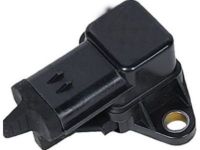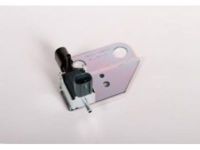- Live Chat
- 1-888-737-9766

Why choose GMPartsGiant
- Optimal Shopping Experience
Want to buy parts for your Chevrolet Tracker? Look no further than GMPartsGiant.com, the best place for Chevrolet Tracker genuine parts. For years, all of our Chevrolet Tracker auto parts and accessories have been expedited directly from dedicated dealers and backed by the manufacturer's warranty, so buying from GMPartsGiant.com is always risk-free.
- Dedicated Customer Service
Our first-class customer service team is committed to providing you with the best assistance possible. Dedicated representatives are standing by to assist you by email, live chat, or phone. Every effort is made to ensure your order for OEM Chevrolet Tracker parts arrives fast no matter your location in the nation, so your vehicle is up and running and back on the road.
- Unbeatable Prices
What makes us the best online source for Chevrolet Tracker parts and Chevrolet Tracker truck parts? Our goal is to offer the lowest prices. You get giant savings shopping with GMPartsGiant.com. With a complete Chevrolet Tracker parts catalog, we cover a full selection of affordable OEM Chevrolet Tracker parts and pickup parts with a huge inventory.
Popular Genuine Chevrolet Tracker Parts
- Engine Parts View More >
- Fuel System, Exhaust, Emission System Parts View More >
- Brakes Parts View More >
- Transmission - Automatic Parts View More >
- Frames, Springs, Shocks, Bumpers Parts View More >
- Cooling System, Grille, Oil System Parts View More >
- Front Axle, Front Suspension, Steering Parts View More >
- Front End Sheet Metal, Heater Parts View More >
Shop Genuine Chevrolet Tracker Parts with GMPartsGiant.com
The Chevrolet Tracker is a versatile mini SUV that has seen various iterations across global markets since 1988. Notably celebrated for its off-road capabilities, the Tracker is considered a light truck due to its robust build and performance. Its first generation utilized a 1.6L G16 I4 engine, which was later replaced by a more powerful 1.6L L01 I4 engine in the second generation. The later models also offered options for a 2.0L J20A I4 engine and a 2.5L H25A V6 engine. In 2019, the Tracker lineup expanded to include a 1.0L turbo I3, a 1.2L L4H turbo I3, and a 1.3L L3Z turbo I3. The North American version was initially equipped with a 5-speed manual, 3-speed GM TH180 automatic, or 4-speed Aisin 03-72LE automatic transmission, but the 3-speed variant was discontinued in 1999. The 2013 variant offered a 5 or 6-speed manual and a 6-speed automatic, while the 2019 Chinese version presented a 6-speed manual/automatic/DCT. The Tracker's parts distinguish it from other SUVs; its chassis and equipment align more with light trucks, providing durability and a truck-like ride. However, the second-generation model transitioned to a more lightweight automobile-type rack and pinion steering, which drew criticism from off-road users. Despite the confusion stemming from the use of the Tracker nameplate across different models, the Chevrolet Tracker remains a reliable and powerful choice for both passenger and off-road use.
Despite its superior equipment, the Chevrolet Tracker, like any other vehicle, experiences wear and tear on its auto parts over time. Owners have reported engine issues, such as slow acceleration response, improper throttle cable adjustment, dirty and frayed cables, and malfunctioning cruise control, pointing towards a failing throttle cable. Moreover, powertrain issues relating to the transmission have been observed. Symptoms include misaligned indicator light or cable, difficulties removing keys from the ignition, the inability to turn off the vehicle, and troubles shifting gears. A faulty shift cable could potentially be the root cause of these problems. However, maintaining your Chevrolet Tracker's prime condition isn't merely about fixing these issues. Regular maintenance is paramount, especially for frequently overlooked parts prone to wear, like the seat belt, wheel cover, and door handle. These components need consistent checkups to ensure the vehicle's longevity and optimal performance.
In terms of quality, OEM parts emerge as the premier choice. These components are directly manufactured by Chevrolet, adhering to stringent factory guidelines, and are subjected to rigorous quality control procedures during production. Our website offers an extensive selection of genuine Chevrolet Tracker parts, like Transmission - Manual, Rear Body Structure, Moldings & Trim, Cargo Stowage at unbeatable prices. Plus, all our OEM Tracker parts, such as Transfer Case are backed by the manufacturer's warranty, a hassle-free return policy, and the promise of swift delivery. So, shop with us confidently and ensure the best for your vehicle!
Chevrolet Tracker Parts Questions & Answers
- Q: How to check and replace the fuel tank pressure sensor in Chevrolet Tracker?A: The fuel pressure sensor, part of the EVAP control on OBD-11 vehicles, detects vapor pressure in the fuel tank. Located atop the tank, it opens the tank pressure valve when a certain pressure is met. If malfunctioning, it signals the PCM, causing a diagnostic trouble code. To test, remove the sensor, connect it to three 1.5V batteries in series, and expect around 2.5 volts between "Vout" and Ground. A vacuum/pressure pump can verify voltage changes with varying pressure. If faulty, replace the sensor. During replacement, inspect for clogs, check the O-ring, and tighten bolts to the specified torque.
- Q: What is the purpose of the EGR Vacuum Solenoid and EGR Valve?A: The Exhaust Gas Recirculation (EGR) system reduces nitrogen oxides by recirculating exhaust gas into the intake manifold. The EGR valve, controlled by a modulator, adjusts based on load conditions. California fuel-injected vehicles also have a sub-EGR valve managed by a PCM-controlled Vacuum Switching Valve (VSV). To inspect the system, ensure the EGR valve diaphragm moves when the engine is cold and warm. Use a vacuum pump to test the valve if unresponsive. Examine hoses for damage and replace if needed. Test the EGR modulator and BVSV for vacuum retention. Check the TWSV or VSV for airflow. For 1999+ models, verify the EGR valve's resistance. To replace, disconnect and remove the old component, clean surfaces, and install the new part.


















































